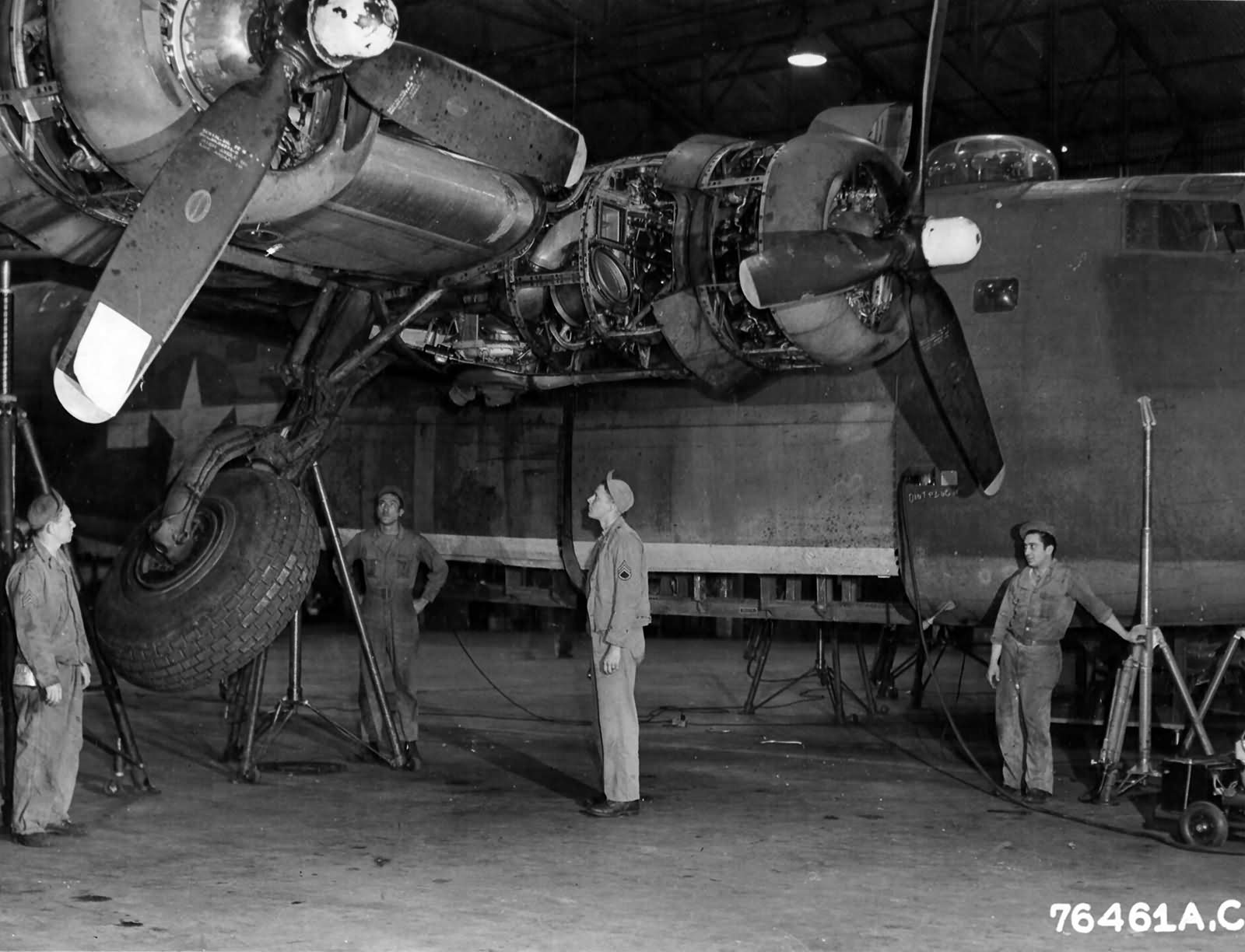The Consolidated B-24 Liberator featured a tricycle landing gear configuration, which contributed significantly to its stability and handling on the ground. Here’s a detailed overview of the landing gear system:
General Configuration:
Tricycle Type:
- Wheel Base: The fore and aft wheel base was 16 feet.
- Main Gear Width: 26 feet 7.5 inches.
Components:
- Main Gear: Two main landing gear assemblies.
- Nose Wheel: One nose wheel assembly.
- Tail Skid: A retractable tail skid designed to withstand rocking loads after landing, but not the full tail landing loads.
Main Landing Gear:
Wheels and Tires:
- Type: Air Corps Type 111 wheels.
- Materials: Made from aluminum or magnesium alloy castings.
- Tire Size: 56-inch by 16-ply tires.
Struts:
- Type: Hydro-pneumatic struts.
- Retraction: Retracted outward and upward into wells located in the undersurface of the center wings.
Support Structure:
- Spars: Supported by two false (auxiliary) spars located just outboard of the inboard engine cowlings, between the front and rear spars.
- Construction: Plate girder type construction, built from heavy rolled angles and flat sheets riveted to two main wing bulkheads.
Emergency Mechanisms:
- Equipped with emergency release and retraction mechanisms.
Brakes:
- Type: Duplex expander tube type brakes.
Nose Landing Gear:
Wheel and Tire:
- Tire Size: 36-inch by ten-ply tire.
Strut:
- Type: Hydro-pneumatic strut.
- Retraction: Retracted upward and slightly aft into a well located just forward of the pilots’ cockpit floor.
Latch and Fairing:
- Latch: Held in the up position by a latch mechanism.
- Fairing Door: Actuated by the gear mechanism to cover the well.
Tail Skid:
Construction:
- Support: Built into the lower aft end of the fuselage below the aft gun position.
- Material: Supported by an Alclad sheet box structure.
Operation:
- Hydraulic: Extended and retracted hydraulically.
The B-24’s landing gear system was robust and designed for the rigors of wartime operations. The tricycle configuration provided excellent stability during takeoff, landing, and taxiing. The main gear’s hydro-pneumatic struts and aluminum/magnesium alloy wheels ensured durability, while the nose wheel’s retraction mechanism and fairing door system demonstrated thoughtful engineering to reduce drag. The auxiliary spars provided necessary structural support, and the inclusion of emergency mechanisms for gear retraction and release enhanced the safety and reliability of the aircraft.
